The Best Coolers, According to Outdoor Experts

Our editors independently select the products we recommend. We may earn a commission on items bought through our links.
Few things are more satisfying than cracking open a cold one in the great outdoors on a warm day. From the cold touch to the pop of the can and the first sip, it’s a brief moment of pure nirvana. But for people without coolers on hot days, this bliss is all but unachievable.
Today's Top Deals
The best coolers keep food and drink cold all day long, ensuring campers, beachgoers, and picnickers don’t need to sip lukewarm hard seltzers. With a wide variety of styles and price ranges that’ll all get the job done, coolers are as accessible as they are useful. Plus, the insulated design makes them tough enough to withstand the elements after a life spent on boats, in cars, and tucked away in the garage.
What the Experts Say
SPY spoke with five outdoor pros to understand the wide world of coolers, including Jessie Helyar, the cofounder of HappyCamperCulture.com; travel writer Josephine Remo; Sarah Murphy, the founder of Explore More NC; Duffy Flynn, ICEMULE’s top product guy; and Andrie Attard, the founder of outdoor gear brand Sevens Crown Hats.
Before spending any money, experts say it’s critical to consider what the cooler will be used for. “For camping for several days, you’ll need a high-quality cooler. Whereas you can get along with a budget choice for a quick day trip to the park,” says Remo. In other words, coolers are optimized for certain situations, from the kind to the quality. In terms of kinds, coolers break down into two fairly straightforward categories: hard and soft.
Hard vs. Soft Coolers
Hard coolers are designed for durability and endurance, they tend to have a longer chill window than their softer brethren. They’re the modern outdoor equivalent of old-school ice chests. “You can’t go past the OG hard cooler when it comes to durability and ice retention,” Helyar says. “They are designed for rugged camping and outdoor use, [and] they are easily packed into the car.” High-end options will be made of a variety of tough plastics and/or metal components while budget-friendlier options will be basic plastic with foam insulation. Some hard coolers also come with wheels that are helpful for short distances, as in the car to the campsite or the kitchen to the backyard.
Soft coolers are made from lightweight, flexible, waterproof materials that make them ideal for moderate-duration excursions, like day trips, picnics, or short hikes, Flynn says. They’re also great for continuous travel where storability is key, like backpacking. “The obvious pro to soft coolers is that they are collapsible,” Helyar says. “When not in use they are easily packed away.” They are typically like sacks with a strap, but backpack-style soft coolers with actual shoulder straps have become popular in recent years.
The differences boil down to the kind of portability and cold space required. Soft coolers are generally easier to carry around and lower in price, if not quality of manufacturing. But they often don’t keep cold as long, max out at sizes with more storage, which aren’t practical carried, and are made from materials that can leak over time or become punctured, experts say.
Price also varies by hundreds of dollars depending on a cooler’s size, style, and features. For hard coolers, that means larger, basic plastic options can be much cheaper than bearproof, rotational-molded plastic options. Wheeled versions will also cost more than their often identical-capacity wheel-less counterparts. For soft coolers, price changes mostly reflect that larger sizes are more expensive. Lunch box-sized coolers, whether hard or small, will be the cheapest.
Bottom line: There’s not really a replacement for a cooler. For cold food and beverage, it’s the only option, though there are many excellent options from which to choose.
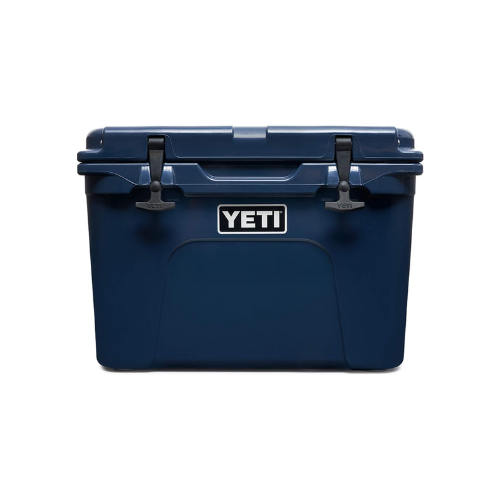
BEST OVERALL
YETI Tundra 35 Cooler
Buy Now On Amazon
Buy NOW AT YETI
The YETI Tundra 35 Hard Cooler is as close to a perfect cooler as one can get. Made with a rotational molding process, which produces a uniform, hollow plastic structure, this cooler insulates extremely well and will withstand almost anything nature can throw at it, including most bears, while packing 39 cans without ice or 29 pounds of straight ice. It’s surprisingly lightweight at 21 pounds when empty, suitable for a car, boat, or four-wheeler, and will keep ice for nearly a week, depending on environmental factors.
“The YETI has all the extras when it comes to the construction of a cooler: super durable body, freezer-quality seals, heavy-duty lid latches and a five-year warranty,” Helyar says. Attard adds, “Honestly, I would go with anything Yeti. They are durable and look good.”
Good for a small group for a day, this cooler also comes in larger sizes for longer trips, like the YETI Tundra 45 Hard Cooler and up. However, there’s simply no getting around the fact that YETI coolers are expensive, with the Tundra 35 Hard Cooler coming in at $275. But even if overpriced for some, this cooler offers top-of-the-market cooling, durability and overall quality, Remo says.
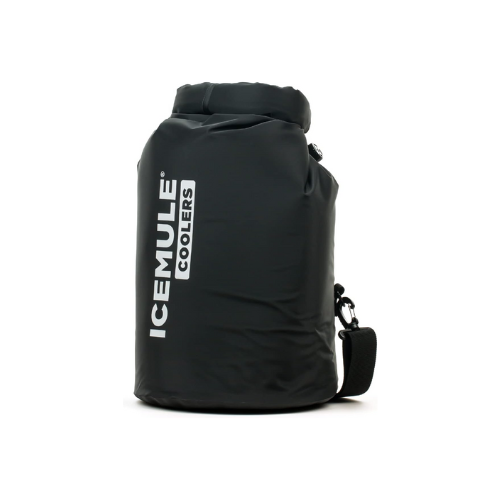
BEST SOFT COOLER
ICEMULE Classic Collapsible Backpack Cooler
Buy Now On Amazon
Buy Now at icemule
The ICEMULE Classic Cooler captures everything useful and practical about soft coolers in a collapsible, rollable backpack-style package. Flynn reps ICEMULE but he also knows exactly how perfect it is from his own travels.
“The ICEMULE Classic stands out due to its unique blend of portability, performance, versatility, and convenience,” he says. “Designed as a sling cooler that sits on your back rather than to the side, it allows for hands-free carrying, making it perfect for any outdoor activity or social gathering.” He also adds it’s waterproof and floats, making it great for water activities too, and able to keep items cold for an impressive 24 hours thanks to its air valve and quality insulation. Remo agrees, saying this cooler is lightweight, easy to store, and great for short trips, only noting the single shoulder strap could get uncomfortable on longer excursions.
But for its $85 price point, easy packability, and 15-liter storage capacity, equivalent to 16 cans with ice, 24 cans without ice, or 16 pounds of ice — the ICEMULE is extremely convenient and an overall great value for shorter adventures.
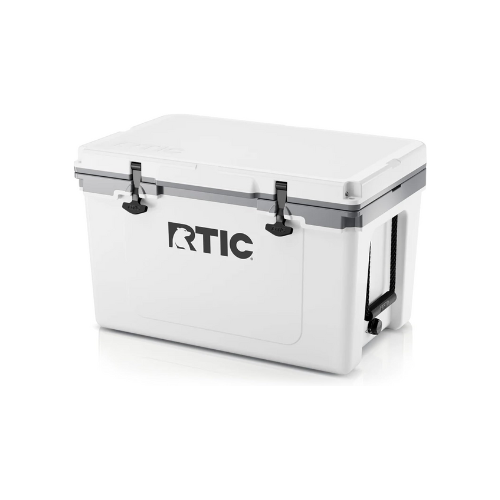
BEST HARD COOLER
RTIC 52 QT. Ultra-Light Hard-Sided Cooler
Buy Now On Amazon
Buy Now at rtic
Not everyone needs the intense durability and price point of a YETI cooler. For people less concerned about the heavy rough and tumble, the RTIC 52 QT Ultra-Light Hard-Sided Cooler offers a 76-can capacity without ice or 51 pounds of straight ice, up to seven days of ice retention, and a bevy of other useful features, like non-skid rubber feet and nylon rope handles for dragging, at a more reasonable $200 price point.
“RTIC is an excellent option if looking at the YETI but wanting to spend a little less,” Helyar says. “They are excellent quality and have very similar features with a less hefty price tag.”
In short, the RTIC has more than enough top-quality design to keep food cool for days without breaking down after a couple of years.
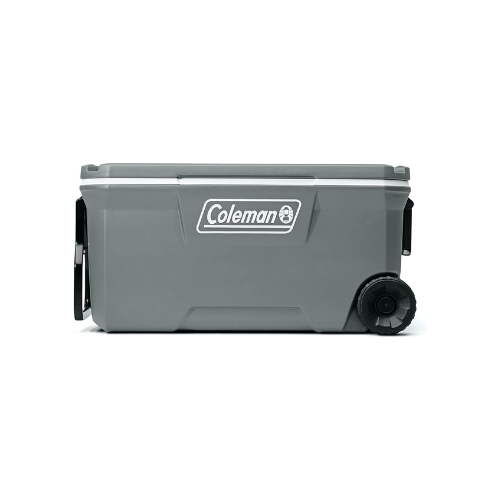
BEST WITH WHEELS
Coleman 316 Series Insulated Portable Cooler with Heavy Duty Wheels
Buy Now On Amazon
But in the interest of highlighting quality alternatives, experts also recommend the Coleman 316 Series Insulated Portable Cooler for its reliable utility and much friendlier $106 price. “At over 100 cans, it has an incredible capacity for group outings, plus the drain plug and sturdy base mean spills aren’t a worry,” Murphy says. “It’s more suited to car camping thanks to the built-in wheels.” Remo agrees, saying this cooler is sturdy, well-priced, and exactly what she’d pick for a cooler with wheels.
Alas, this cooler isn’t perfect; Murphy says she wishes the handles were a bit taller for dragging and loading, but that they’re not a dealbreaker. Helyar also notes this cooler lacks seals on the lid, so it simply cannot keep ice as long as more serious hard coolers. But this Coleman cooler still offers up to five days of ice retention in 90-degree weather, which is hard to beat at its $100 sticker price.
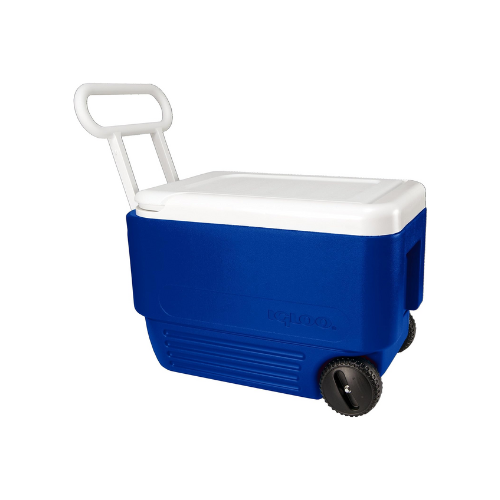
BUDGET COOLER
Igloo 38 QT. Hard-Sided Ice Chest Cooler with Wheels
Buy Now On Amazon
Buy now at walmart
Buy Now at target
The go-to cooler for millions of people over the years, the Igloo 38 QT Wheelie Cooler is effective and affordable. With a capacity for 53 cans without ice, this cooler makes single-day family outings a cinch. Helyar says it’s no YETI, but it’s a great entry-level cooler, with wheels good for a little moving around, like at the family picnic or barbeque. Remo adds that it’s affordable but potentially less durable, especially the wheels.
The Igloo Wheelie Cooler offers great capacity and convenience but it won’t last forever, especially if subject to more movement and related wear and tear.
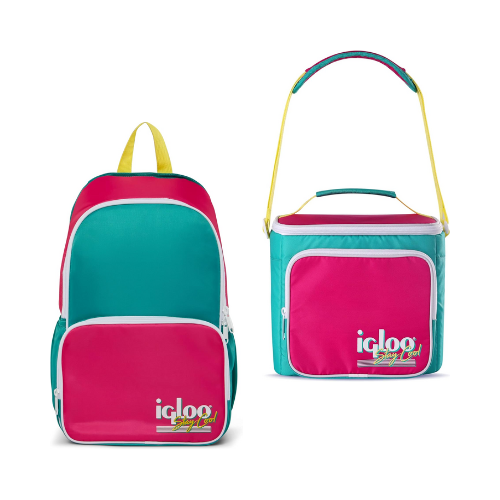
BEST RETRO
Igloo 90s Retro Collection Lunch Box Cooler
BUY THE LUNCH BOX
BUY THE BACKPACK
Coolers are as utilitarian as products get, but that doesn’t mean there’s no room for style. Coolers with a retro aesthetic, like the Igloo Retro Square Lunch Bag or the matching Igloo Retro Backpack Cooler, can appeal to older generations remembering the terrible but stylish coolers of yore or younger generations looking for a throwback beach vibe. Attard says, “I can see this trending,” and Helyar calls them “a fun take on the retro theme.”
Though Remo notes these won’t be great for intensive use or longer hikes, they’re fun and functional for park day or afternoon at the beach, she says.
Plus, compared to every other purpose-driven cooler, these options are downright cheap, with the backpack at $40 and the lunch bag at $25. But again, people are mostly buying the looks here and these coolers will really only be good for packing a couple of lunches.
Frequently Asked Questions About Coolers
What’s the Best Cooler?
This question is impossible to answer without first understanding what the cooler will be used for and how often it will be used, experts say.
For longer trips or excursions that require more ice and supplies — basically, car trips — larger, hard coolers are generally better because they’re built for endurance and designed to last over the long term.
For shorter trips where on-hand ice is less important or for more ongoing travel, like backpackers who always want a cooler with them, soft coolers will be better because they’re designed to be lightweight and packable.
Make no mistake: Both varieties of coolers are durable and useful, but they’re optimized for different outdoor situations.
What’s a Good Price Range for Coolers?
Prices vary wildly depending on the size and style of the cooler.
Hard coolers often cost hundreds of dollars because of their durability and complex manufacturing, with $100 to $300 being typical for useful but not overly large hard options. Soft coolers often cost around $100 or less with the same considerations, though there are also very pricey options too.
Prices for either kind will generally go up for more storage capacity and other features, like wheels on a hard cooler or backpack features on a soft cooler.
How Can I Optimize My Cooling and Ice Retention?
Good question! By their nature, hard coolers are sealed better than soft coolers, so they will keep ice better by default. But there are some best practices for any cooler to make the ice last as long as possible and they all boil down to common sense strategies that keep heat away.
Don’t open the cooler too often, which lets cold out and heat in.
Keep any coolers out of direct sunlight.
Don’t drain the water until the end because it helps insulate ice, keeping it frozen for longer.
For keeping any actual food cold, most brands recommend a two-to-one ratio of ice to stuff, so the cooler should be filled with ⅔ of ice and ⅓ of stuff.
Can I Use Dry Ice in my Cooler?
The general answer is no because dry ice is not easily handled and could present a safety risk to people who don’t know about it. Most coolers also are not designed to handle dry ice.
That being said, some coolers are dry ice-friendly, like the YETI Tundra 35 Hard Cooler, but anyone considering using dry ice should double-check that their coolers can handle it and warn anyone else reaching into the cooler to not touch the ice.
Proceed to Checkout
More Top Deals from SPY
Best of SPY